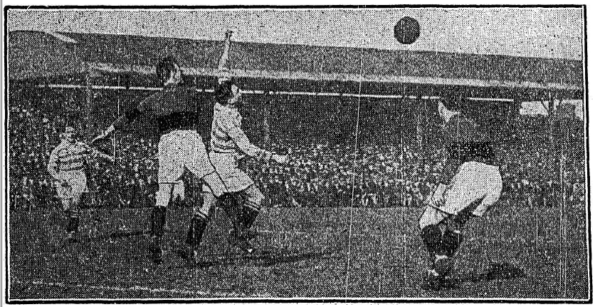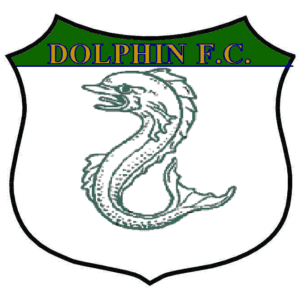By Gavan Bergin
Bill Fallon was born on January 14th 1912 in Larne, Co Antrim. When he was young he moved to Dublin, and that was where he started playing football. By the time he was nineteen he was one of the best players in Ireland.
Bill made his name as a goalscorer in junior football. He played for a team called May Roberts, and his striking deeds for them earned him his first press notices. On April 22nd 1930, the Evening Herald reported his “dominant performance” against Ranelagh Celtic in the Leinster Junior Combination League. Then, on April 29th 1930, the Herald mentioned him again, after he scored two goals in extra time in a semi-final against Lucan United, winning the game for May Roberts. That late, dramatic double strike showed that, even as a youngster, he had the knack of scoring decisive goals just when they were needed. After his great showing in that cup game, he continued to play well and score well and win games for May Roberts. The newspapers praised him again, and soon top-level clubs took an interest in signing him. And when the Dublin Sport Weekly in early 1931 said: “Bill Fallon is a youth of distinct promise,” his days in junior football were numbered.

Bill joined Brideville, a League of Ireland club from the Liberties area of Dublin. He went straight into their first team, and made his debut in their League of Ireland Shield game against St James’s Gate, at Richmond Park on March 1st 1931. And what a debut it was! He played a fantastic game that day, attacking like fury from first whistle to last, dominating and destroying the opposition defence. He started the game on the left wing, then he was switched to the right wing for the second half. Left or right he did fine work as a wide man, up and down the wing, beating defenders with his speed and his skill, getting to the byline and crossing the ball into the box. All game long he opened up space creating scoring opportunities for his teammates- but in the end he made his real impact as the taker not the maker of chances. He scored not one, not two, but three goals! The first and the second came from headers when he got himself into the box. And the third goal could hardly have been more different. On the wing again, he made another lightning- quick run that earned his team a corner. He took the kick himself and hit the ball from the corner flag and sent it curving high and hard, past defenders and goalkeeper, on its way into the far corner of the net. That goal, scored direct from a corner, completed his hattrick and put the seal on a perfect performance. The Irish Independent: said it plain: “Fallon was the best forward in the Brideville line. He was the driving force behind his team’s 4-1 win.”
Unsurprisingly, Bill kept his place in the team. When the 1931/32 season kicked off he was a regular starter on the wing for Brideville. At that stage, whether he was on the right or the left, he mainly played as an orthodox winger, staying wide and setting up goals for other players. Especially in League of Ireland games, he didn’t get many chances and he didn’t get any league goals that season, He still had the striker’s touch, though, and he scored more than his share of goals in cup games. He scored some good ones in the Leinster Senior Cup, including the decider in a frantic 4-3 win against Drumcondra on March 12th 1932. That strike began a run of scoring and in the next couple of months, he scored three goals in four games in the League of Ireland Shield. On April 16th 1932, he scored in a 3-0 win against Dundalk. The following week, on April 24th, he struck the seventh goal in Brideville’s astounding 7-0 win against Jacobs. And on May 5th, he scored again, in a 2-3 loss to Bohemians. In that defeat he played a grand game, ceaselessly attacking for Brideville as they fought back after being three goals down at half time. In the second half, he was in the van of an all but irresistible assault on the Bohs defence. He scored one goal, then played his part in another to bring his team to within a goal. At that point, they looked certain to at the very least salvage a draw. But, as ever in football, time was the implacable foe, and the game was up before Brideville could equalise. Although Bill finished on the losing side, the Irish Independent acclaimed his “clever, agile wing play.”
That game was a good example of his and Brideville’s season. Of course, his great play couldn’t make them a great team. They lost more often than they won and they did poorly in all the main competitions. In the FAI Cup they lost in the first round, in the League they finished near the bottom of the table. Even in the Shield tournament, with all his super goalscoring form, they finished in seventh place. The season was a failure for Brideville but it was a success for Bill, who earned himself a move to a bigger and better club.

Before the 1932/33 season, he was signed by Dolphin FC, which was one of the most successful and well supported teams in Dublin at that time. The previous season, a League of Ireland record crowd of 30,000 had attended their home game against Shamrock Rovers at the Iveagh Grounds in Crumlin. Unfortunately, they lost that game by 0-1, then Rovers beat them by the same score in the 1932 FAI Cup Final.
But the next time Rovers came to play, Dolphin had Bill on their side and they got payback. The game was played on November 5th 1932, and on that day it was the guys on the Rovers team that got burned. Dolphin beat them, 5-2, with Bill making the fourth goal and scoring the fifth. Then on March 5th 1933, he put on another magic show in Dolphin’s 2-0 win against Rovers in the Shield, “closing in on a centre to score the first goal and producing scintillating wing play” according to the Belfast Telegraph. He was in great scoring form all through that season, notching seven in the league, plus almost as many in cup games. His last goal of the season was another one against Shamrock Rovers on March 17th 1933, in the FAI Cup final. In that game, he scored in the 52nd minute, putting Dolphin 3-0 and seemingly firing them to victory again. This time, Rovers had the last laugh when they saved the game and won the Cup.
In 1933/34, Bill played as well, if not better, than he had in his first season with Dolphin. He kept up his wing brilliance and he kept scoring goals. In the end, however, he got the offer that can’t be refused. The offer that the best Irish players always get. Two thirds of the way through the season he was gone from Dolphin and gone from the League of Ireland. In February 1934 he signed for Notts County FC.
End of Part 1.
Read more:
Bill Fallon – Part 2
Bill Fallon – Part 3
Bill Fallon – Part 4



